Related Research Articles

Bell Labs is an American industrial research and scientific development company credited with the development of radio astronomy, the transistor, the laser, the photovoltaic cell, the charge-coupled device (CCD), information theory, the Unix operating system, and the programming languages B, C, C++, S, SNOBOL, AWK, AMPL, and others. Ten Nobel Prizes and five Turing Awards have been awarded for work completed at Bell Laboratories.

In visual perception, an optical illusion is an illusion caused by the visual system and characterized by a visual percept that arguably appears to differ from reality. Illusions come in a wide variety; their categorization is difficult because the underlying cause is often not clear but a classification proposed by Richard Gregory is useful as an orientation. According to that, there are three main classes: physical, physiological, and cognitive illusions, and in each class there are four kinds: Ambiguities, distortions, paradoxes, and fictions. A classical example for a physical distortion would be the apparent bending of a stick half immerged in water; an example for a physiological paradox is the motion aftereffect. An example for a physiological fiction is an afterimage. Three typical cognitive distortions are the Ponzo, Poggendorff, and Müller-Lyer illusion. Physical illusions are caused by the physical environment, e.g. by the optical properties of water. Physiological illusions arise in the eye or the visual pathway, e.g. from the effects of excessive stimulation of a specific receptor type. Cognitive visual illusions are the result of unconscious inferences and are perhaps those most widely known.

The tangram is a dissection puzzle consisting of seven flat polygons, called tans, which are put together to form shapes. The objective is to replicate a pattern generally found in a puzzle book using all seven pieces without overlap. Alternatively the tans can be used to create original minimalist designs that are either appreciated for their inherent aesthetic merits or as the basis for challenging others to replicate its outline. It is reputed to have been invented in China sometime around the late 18th century and then carried over to America and Europe by trading ships shortly after. It became very popular in Europe for a time, and then again during World War I. It is one of the most widely recognized dissection puzzles in the world and has been used for various purposes including amusement, art, and education.

An impossible object is a type of optical illusion that consists of a two-dimensional figure which is instantly and naturally understood as representing a projection of a three-dimensional object but cannot exist as a solid object. Impossible objects are of interest to psychologists, mathematicians and artists without falling entirely into any one discipline.

Clifford Alan Pickover is an American author, editor, and columnist in the fields of science, mathematics, science fiction, innovation, and creativity. For many years, he was employed at the IBM Thomas J. Watson Research Center in Yorktown, New York, where he was editor-in-chief of the IBM Journal of Research and Development. He has been granted more than 700 U.S. patents, is an elected Fellow for the Committee for Skeptical Inquiry, and is author of more than 50 books, translated into more than a dozen languages.
A dissection puzzle, also called a transformation puzzle or Richter puzzle, is a tiling puzzle where a set of pieces can be assembled in different ways to produce two or more distinct geometric shapes. The creation of new dissection puzzles is also considered to be a type of dissection puzzle. Puzzles may include various restraints, such as hinged pieces, pieces that can fold, or pieces that can twist. Creators of new dissection puzzles emphasize using a minimum number of pieces, or creating novel situations, such as ensuring that every piece connects to another with a hinge.

GeoGebra is an interactive geometry, algebra, statistics and calculus application, intended for learning and teaching mathematics and science from primary school to university level. GeoGebra is available on multiple platforms, with apps for desktops, tablets and web. It is presently owned by Indian edutech firm Byju's.
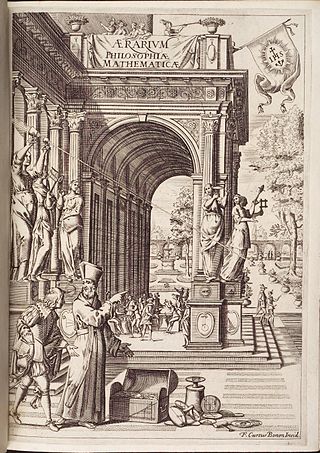
Mario Bettinus was an Italian Jesuit philosopher, mathematician and astronomer. The lunar crater Bettinus was named after him by Giovanni Riccioli in 1651.
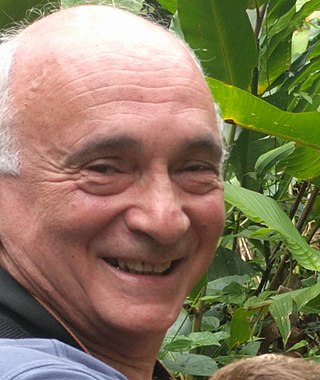
Alexander Bogomolny was a Soviet-born Israeli-American mathematician. He was Professor Emeritus of Mathematics at the University of Iowa, and formerly research fellow at the Moscow Institute of Electronics and Mathematics, senior instructor at Hebrew University and software consultant at Ben Gurion University. He wrote extensively about arithmetic, probability, algebra, geometry, trigonometry and mathematical games.
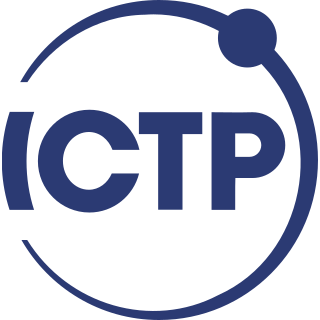
The Abdus Salam International Centre for Theoretical Physics (ICTP) is a research center for physical and mathematical sciences, located in Trieste, Friuli-Venezia Giulia, Italy.

Gianni A. Sarcone is a visual artist and author who collaborates with educational publications, writing articles and columns on topics related to art, science, and mathematics education. He has contributed to several science magazines, including Focus Junior (Italy), Query-CICAP (Italy), Rivista Magia (Italy), Alice & Bob / Bocconi University (Italy), Brain Games (USA), and Tangente (France). Sarcone has over 30 years of experience as a designer and researcher in the areas of visual creativity, recreational mathematics and educational games.
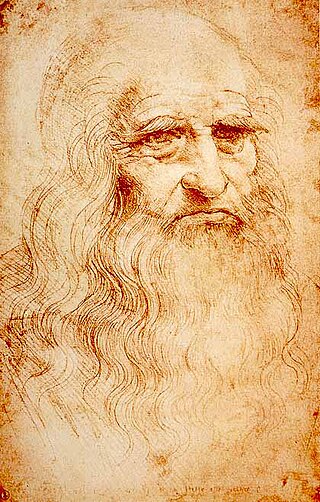
Science and technology in Italy has a long presence, from the Roman era and the Renaissance. Through the centuries, Italy has advanced the scientific community which produced many significant inventions and discoveries in biology, physics, chemistry, mathematics, astronomy, and the other sciences. In 2019, Italy was the 6th world producer of scientific articles publishing more than 155,000 documents. From 1996 to 2000, it published a total of 2 million scientific articles. Italy was ranked 28th in the Global Innovation Index in 2022.
Michael Anthony DiSpezio is an American author, television host and stage edutainment performer who specializes in science and science education. He is known for his quick wit and playful style. Along with infusing his performances with humor and theatrics, he often engages audiences in hands-on activities, puzzle solving and 3D illusions.

Jason Latimer, known by the stage name LATIMER, is an American illusionist. In 2003, he became one of four Americans ever to win the title Grand Prix "Best Overall" at the World Championships of Magic. In 2012, Latimer starred in the six live British television specials on the BBC One's "The Magicians," and won UK competition overall. In 2014, Latimer joined Penn & Teller and Christen Gerhart as a judge on the American magic competition television series Wizard Wars on the Syfy channel. In 2015, Latimer launched the Impossible Science program in San Diego, CA. Currently, Latimer is the curator of Impossible Science for the Fleet Science Center and oversees the Impossible Science Initiative in science centers throughout Southern California. Jason co-hosts Science Channel's series SciJinks with The Big Bang Theory's Johnny Galecki and Mythbusters: The Search's Tamara Robertson. In 2018, Jason joined the likes David Copperfield and David Blaine as one of the few recipients of the prestigious Golden Grolla Award from the Masters of Magic in Saint-Vincent, Italy. In 2018, Jason was the closing speaker of the USA Science and Engineering Festival in Washington, D.C., for recognition of Impossible Science and changing education with wonder.
Gathering 4 Gardner (G4G) is an educational foundation and non-profit corporation devoted to preserving the legacy and spirit of prolific writer Martin Gardner. G4G organizes conferences where people who have been inspired by or have a strong personal connection to Martin Gardner can meet and celebrate his influence. These events explore ideas and developments in recreational mathematics, magic, illusion, puzzles, philosophy, and rationality, and foster creative work in all of these areas by enthusiasts of all ages. G4G also facilitates a related series of events called Celebration of Mind (CoM).
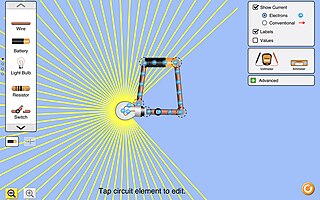
PhET Interactive Simulations, a project at the University of Colorado Boulder, is a non-profit open educational resource project that creates and hosts explorable explanations. It was founded in 2002 by Nobel Laureate Carl Wieman. PhET began with Wieman's vision to improve the way science is taught and learned. Their stated mission is "To advance science and math literacy and education worldwide through free interactive simulations."

Susana Martinez-Conde is a Spanish-American neuroscientist and science writer. She is a professor of ophthalmology, neurology, physiology, and pharmacology at the SUNY Downstate Medical Center, where she directs the Laboratory of Integrative Neuroscience. She directed laboratories previously at the Barrow Neurological Institute and University College London. Her research bridges perceptual, cognitive, and oculomotor neuroscience. She is best known for her studies on illusions, eye movements and perception, neurological disorders, and attentional misdirection in stage magic.

The Garden of Archimedes is a museum for mathematics in Florence, Italy, founded in 2004. It has been compared to the National Museum of Mathematics in New York City, the only museum in North America devoted to mathematics.
Science tourism is a travel topic grouping scientific attractions. It covers interests in visiting and exploring scientific landmarks, including museums, laboratories, observatories and universities. It also includes visits to see events of scientific interest, such as solar eclipses.